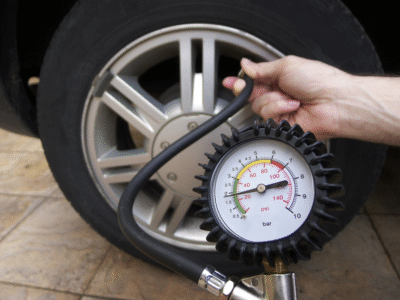
Ford Focus Instrument Panel Warning Lights: A Complete Driver’s Guide

If you’ve ever started your Ford Focus and been greeted by a sea of glowing icons across your dashboard, you’re not alone. Those tiny lights—some red, others amber or green—aren’t there just for decoration. They’re your car’s way of speaking to you, signaling everything from simple reminders to urgent warnings.
In this comprehensive guide, we’ll walk through every major instrument panel warning light in a Ford Focus, explaining what it means, what to do about it, and when it’s time to pull over and call for help.
Let’s make sense of that dashboard once and for all.
- Understanding Ford Focus Dashboard Lights
- Color Codes: Red, Amber, and Green
- Engine Warning Lights
- Oil Pressure Light
- Battery Charge Warning Light
- Coolant Temperature Warning Light
- Brake System Warning Light
- ABS Warning Light
- Airbag and Seatbelt Warning Lights
- Power Steering Warning Light
- Tire Pressure Monitoring System (TPMS)
- Traction Control and Stability Light
- Check Engine Light: When to Worry
- Diesel Particulate Filter (DPF) Light
- Transmission Warning Light
- Adaptive Cruise Control Light
- Lane-Keeping and Assist Systems
- Fog Light Indicators
- Low Fuel and Range Indicators
- How to Reset Warning Lights
- When to Visit a Mechanic
- Final Thoughts
- FAQs
Understanding Ford Focus Dashboard Lights
Let’s face it — dashboard lights can be intimidating. Every icon seems to scream “Something’s wrong!” But not all lights signal danger. The instrument panel is designed to provide you with real-time feedback on your vehicle’s systems.
Think of it as your Focus’s heartbeat monitor — it’s constantly telling you how things are running under the hood.
Most modern Ford Focus models (especially 2012 and newer) feature a digital instrument cluster, combining traditional lights with message center alerts.
Color Codes: Red, Amber, and Green
Before diving into the specific icons, understanding color meanings can save you a lot of panic (and money).
- Red: Immediate action needed. Something critical like brakes, oil pressure, or engine overheating.
- Amber/Yellow: Warning — pay attention soon. Often linked to sensors or maintenance issues.
- Green/Blue: Informational. Lights that tell you a system (like headlights or cruise control) is active.
So, if you see red, stop the car. If it’s amber, plan to check soon. Green? Relax — your Focus is just keeping you in the loop.
Engine Warning Lights
1. Check Engine Light
The most common — and often the most misunderstood — icon.
It looks like a small engine outline and can represent dozens of issues, from a loose gas cap to a failing oxygen sensor.
If steady: Book a diagnostic soon.
If flashing: Stop immediately — misfires can damage the catalytic converter.
Oil Pressure Light
This red oil can symbol is no joke.
It indicates that engine oil pressure is dangerously low — continuing to drive could seize your engine.
What to do:
- Stop the car immediately.
- Check your oil level with the dipstick.
- Add oil if it’s low, but if the light stays on — call a tow truck.
Battery Charge Warning Light
Resembling a car battery, this light means your charging system isn’t working properly.
Usually, it’s tied to the alternator or battery cables.
Steps to take:
- Turn off non-essential electrical accessories (A/C, radio).
- Drive to a safe spot or mechanic before the battery drains completely.
Coolant Temperature Warning Light
The thermometer symbol with wavy lines means your engine is overheating.
Ignore it, and you risk warping the head gasket or engine block.
Quick actions:
- Pull over and turn off the engine.
- Wait for it to cool before opening the radiator cap.
- Check coolant levels — top up if needed.
Brake System Warning Light
A red exclamation mark inside a circle — or simply the word BRAKE — signals issues like:
You may be interested in reading Where Is Ford Focus Fuse Box: A Complete Owner’s Guide
Where Is Ford Focus Fuse Box: A Complete Owner’s Guide- Parking brake still engaged
- Low brake fluid
- Brake system malfunction
Never drive with this light on.
Check fluid first, then contact your mechanic if the issue persists.
ABS Warning Light
If you see ABS glowing amber, your anti-lock braking system has a fault.
Your standard brakes will still work, but you’ll lose anti-skid assistance on slippery roads.
It’s not an emergency — but get it checked soon.
Airbag and Seatbelt Warning Lights
When the airbag light stays on after startup, your Supplemental Restraint System (SRS) may be faulty.
This could mean airbags won’t deploy in an accident.
Pair that with a seatbelt reminder light, and it’s your Focus’s way of insisting on safety first.
Power Steering Warning Light
A steering wheel icon with an exclamation mark typically means your electric power steering (EPS) has failed.
Steering will become heavier but still functional.
If it’s red: Stop immediately.
If amber: Schedule a service visit soon.
Tire Pressure Monitoring System (TPMS)
The TPMS light — shaped like a flat tire with an exclamation mark — means one or more tires have low air pressure.
Check your tires using a gauge and refill to the recommended PSI listed on the driver’s door frame.
Pro tip: Reset the TPMS after correcting the pressure.
Traction Control and Stability Light
This light (a car with skid marks beneath it) indicates your traction control system is active.
If it blinks during acceleration, it’s working — helping prevent wheel spin.
If it stays solid, there might be a sensor fault.
Check Engine Light: When to Worry
Let’s go deeper on this one since it’s the most misunderstood.
Common Causes
- Loose gas cap
- Dirty mass airflow sensor
- Faulty spark plugs
- Catalytic converter issues
What to Do
- Tighten the gas cap first.
- Use an OBD-II scanner for codes.
- If the light flashes, don’t drive — engine misfires can cause major damage.
Diesel Particulate Filter (DPF) Light
If you drive a diesel Focus, this icon (a rectangle with dots inside) indicates the filter is clogged.
Solution: Drive for about 15–20 minutes at highway speed to trigger regeneration.
If the light stays on, a manual regen at a garage might be needed.
Transmission Warning Light
This wrench-shaped light warns of transmission issues — often linked to gearbox or clutch problems.
If your car hesitates, shifts roughly, or loses power along with this light, stop driving and call a technician.
Adaptive Cruise Control Light
A small speedometer with a car icon means your adaptive cruise system is active.
If it flashes or turns amber, sensors may be dirty or obstructed — try cleaning the front radar area.
 Where Is Ford Focus Fuse Box: A Complete Owner’s Guide
Where Is Ford Focus Fuse Box: A Complete Owner’s Guide Complete Guide to Replacing the Headlight Bulb in a Mitsubishi Mirage
Complete Guide to Replacing the Headlight Bulb in a Mitsubishi MirageLane-Keeping and Assist Systems
Modern Focus models include lane departure alerts.
- Green lines: System active.
- Amber or gray: Camera not detecting lines properly.
- Flashing: You’re drifting — steer back gently.
Fog Light Indicators
A small lamp icon facing left (front fog) or right (rear fog) simply shows they’re turned on.
They’re not warnings — just reminders to switch them off when visibility improves.
Low Fuel and Range Indicators
A yellow fuel pump light means you’re running low.
Most Focus models give you 30–50 miles of range left.
Avoid letting it reach empty — sediment from the tank bottom can clog filters and injectors.
How to Reset Warning Lights
Sometimes, even after fixing an issue, a light stays on.
Here’s a simple reset procedure:
- Turn the ignition to “ON” (don’t start).
- Press the OK or Menu button on the steering wheel to navigate to Vehicle Settings.
- Scroll to Reset Oil Life / Warnings and confirm.
- Restart the car.
If the light persists, you might need diagnostic software (like FORScan or OBDLink).
When to Visit a Mechanic
Not all lights need immediate attention — but some are deal-breakers:
- Flashing check engine light
- Red oil or temperature light
- Brake or airbag light that stays on
Remember, your Focus’s dashboard isn’t trying to annoy you — it’s literally saving your engine, wallet, and maybe your life.
Final Thoughts
Your Ford Focus instrument panel is like a conversation — your car’s way of saying, “Hey, something’s up!”
Once you learn to read the signs, those lights stop being mysterious and start being empowering.
By staying alert and responding smartly, you’ll not only prevent costly repairs but keep your ride smooth and safe.
So the next time a light blinks on, don’t panic — just listen, interpret, and take action.
FAQs
1. Why does my check engine light turn off by itself?
It can turn off after several drive cycles if the issue (like a loose gas cap) corrects itself.
2. Can I drive with the battery light on?
Only for a short distance — your car may shut down once the battery drains.
3. What’s the most serious dashboard light?
The oil pressure and coolant temperature lights. Ignoring them can destroy your engine.
4. My ABS light is on — is my car unsafe?
Your regular brakes work, but ABS won’t assist during hard braking. Drive cautiously.
5. Do I need a scanner to reset lights?
Not always. Some can be cleared manually, but persistent ones require an OBD-II scanner.
 Where Is Ford Focus Fuse Box: A Complete Owner’s Guide
Where Is Ford Focus Fuse Box: A Complete Owner’s Guide Complete Guide to Replacing the Headlight Bulb in a Mitsubishi Mirage
Complete Guide to Replacing the Headlight Bulb in a Mitsubishi Mirage Mitsubishi Mirage Wiper Blade Size and Replacement Guide (All Years)
Mitsubishi Mirage Wiper Blade Size and Replacement Guide (All Years)If you want to know other articles similar to Ford Focus Instrument Panel Warning Lights: A Complete Driver’s Guide you can visit the category Service and Parts.
Deja una respuesta






More content of your interest